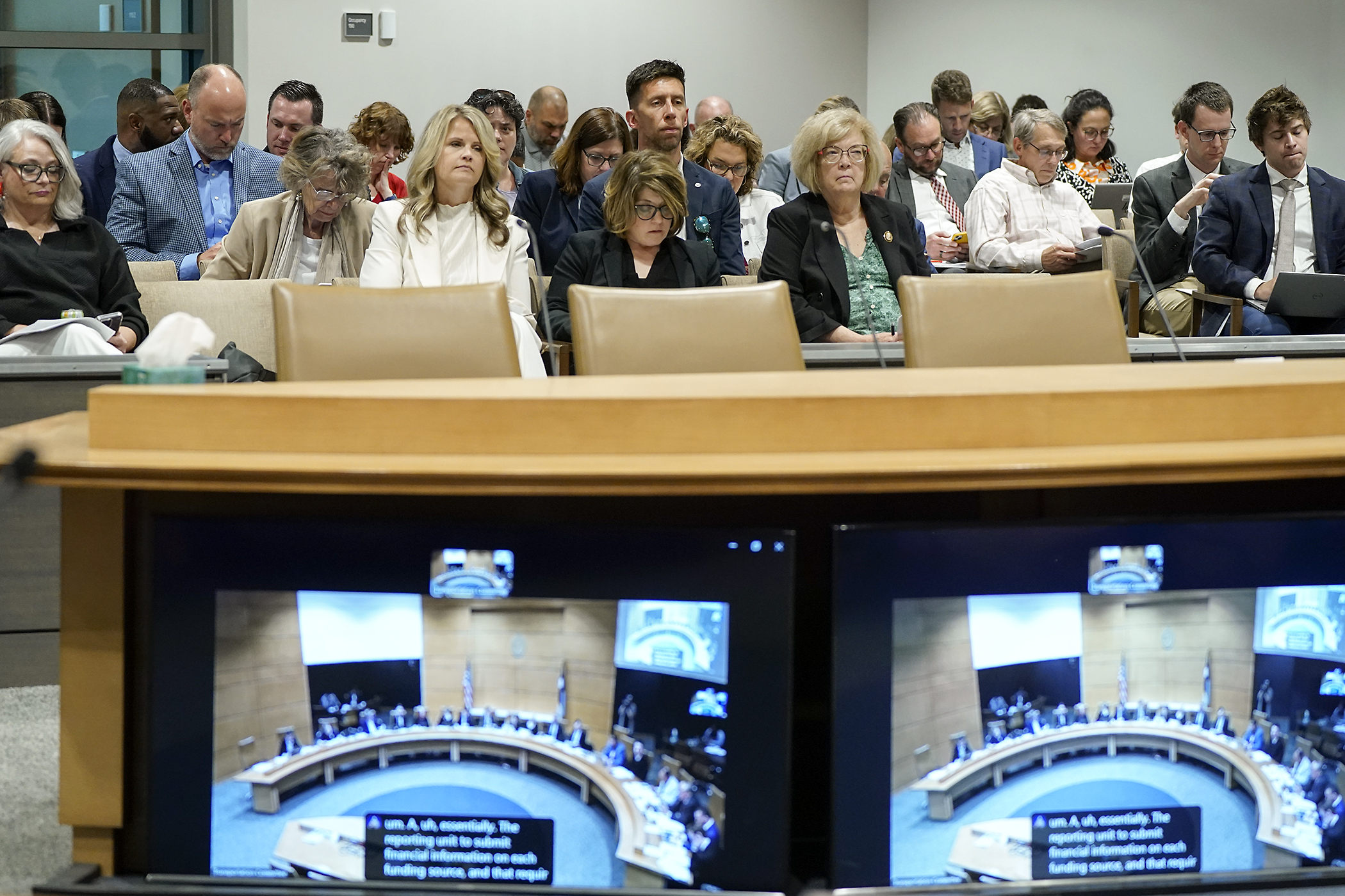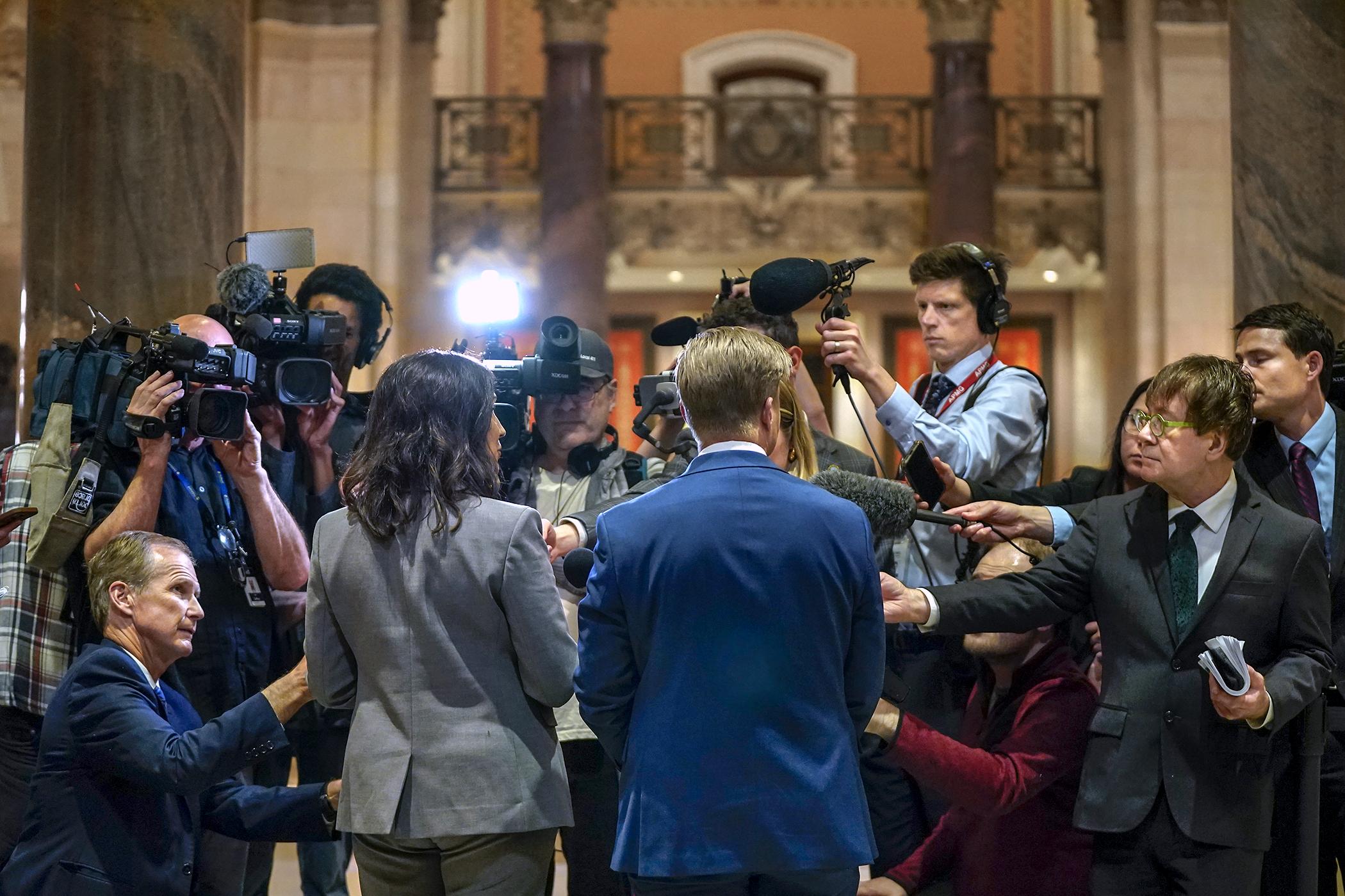Lawmakers take long road to compromise transportation bill

It’s been a long and winding road for the 2025 transportation bill.
After a fortnight of behind-closed-doors negotiations that involved the input of the Departments of Transportation and Public Safety and the Metropolitan Council and the mediation skills of the House Ways and Means chairs and Senate Finance chair, the working group came to an agreement on a $9.88 billion bill that it unveiled at its final public meeting on Friday.
The members knew that there would have to be some funding cuts, but what at first may appear to be a budget cut on the agreement spreadsheet might not be as severe as at first glance.
Of the $115 million in targeted General Fund reductions for the 2026-27 biennium, $61.41 million would come from a reduction in funding for Metro Transit system operations, while $22 million more in cuts would come from Greater Minnesota transit.
But transportation is an area with a lot more funding sources than just the General Fund, and the bill boasts several boosts in funding, as well as transferring $93.08 million of the regional transportation sales tax for metro counties to the Metropolitan Council that’s earmarked for bus rapid transit.
That proved to be quite a contentious provision for testifiers from metro counties, as counties currently receive 17% of the proceeds from the regional transportation sales tax, and the bill would cut that to 8.5%.
There are other funding cuts in the bill, including reductions in the transfer to the active transportation account ($11 million), drug recognition evaluator training ($6 million), and Department of Public Safety strategy and analytics ($1.12 million).
What’s getting funded
The bill contains upward operating adjustments for several sections of the state’s transportation budget, including state roads operations and maintenance, the trunk highway fund and the State Patrol. Among other appropriations, the bill’s largest increases in new funding for the fiscal 2026-27 biennium would go to:
- Blatnik Bridge spending authority, $650 million;
- Federal funds spending authority for state road construction, $454.09 million;
- State Patrol metro headquarters building, $97.03 million;
- priority trunk highway projects, $66.5 million;
- state roads highway improvement, $18 million;
- state roads program delivery, $16.32 million;
- a new control tower at the Duluth Airport, $10 million;
- airport development and assistance, aviation support and services, and the Civil Air Patrol, $9.6 million;
- Washington Avenue Bridge suicide prevention measures, $8 million;
- Rum River Dam Pedestrian Bridge, $6.2 million;
- State roads corridor planning, $6 million;
- No-fee transaction reimbursement to deputies, $5 million;
- Truck station modernization, $4 million; and
- University of Minnesota Empowering Small Minnesota Communities program, $4 million.
The bill also extends to the current fiscal year a $10 million outlay for Amtrak service to Chicago. In other provisions, the Metropolitan Council would be authorized to loan $250 million to the Department of Transportation for highway and bus rapid transit construction coordination. And $11.28 million of the auto parts sales tax distribution would be moved from the Highway Users Tax Distribution Fund to the General Fund.
General Fund impact
A change in electric vehicle registration surcharges would be expected to add $23.3 million to the General Fund in the next biennium, while cancellations of an advisory council on traffic safety ($3.25 million), a St. Cloud transit service analysis ($3.13 million) and a funding match for the National Electric Vehicle Infrastructure program ($3 million) would also benefit the General Fund. The retention of the regional transportation sales tax for Metropolitan Council bonding interactions is also expected to add $1.83 million.
Policy changes
Here’s how some of the agreement’s policy changes might affect you.
If you use public transit: In addition to an increase in funding for bus rapid transit lines, free regular route transit in the Twin Cities metropolitan area would be available for certified riders of such special transportation services as Metro Mobility.
If you’re thinking of going electric: The agreement would increase the surcharge on electric vehicles, establish a surcharge on plug-in hybrid electric vehicles, and impose a per-kilowatt-hour fee on public electric vehicle charging station use. And if you’re thinking of getting an electric bike, the agreement would revise the eligibility, amount and allocation process for the electric-assisted bicycle rebate.
If you deliver: You would no longer be required to pay the state’s retail delivery fee for some liquefied fuel products or for road construction materials.
If your town is having a hard time paying for road upkeep: There would be a new local government road funding gap assistance account to provide financial assistance for roads solely under their jurisdiction.
If you ride an all-terrain vehicle: You would have to use a factory-equipped seatbelt in a class 2 ATV when it’s operated on a public road right-of-way.
If you ride a motorcycle: You will be limited in the type of roads on which you can engage in lane filtering and lane splitting.
If you don’t show up for a scheduled driving exam: It’ll cost you. Fees will be increased for no-shows and cancellations.
And if you cross the Mississippi River via Minneapolis’ 10th Avenue Bridge: Know that you would now be using the Minnesota Senate Majority Leader Kari Dziedzic Memorial Bridge.
[MORE: View details of the policy agreement.]
Related Articles
Search Session Daily
Advanced Search OptionsPriority Dailies
Legislature — with budget incomplete — gavels out, prepares for special session
By Rob Hubbard Some years, state legislative sessions surge to a climax on their final day, a flurry of activity providing a sustained adrenaline rush, culminating in smiles of satisfaction as...
Some years, state legislative sessions surge to a climax on their final day, a flurry of activity providing a sustained adrenaline rush, culminating in smiles of satisfaction as...
Walz, lawmakers strike budget deal in session's final days
By Lisa Kaczke With five days to go in the 2025 session, three of four legislative leaders announced a budget agreement Thursday that would sunset unemployment insurance for hourly school empl...
With five days to go in the 2025 session, three of four legislative leaders announced a budget agreement Thursday that would sunset unemployment insurance for hourly school empl...